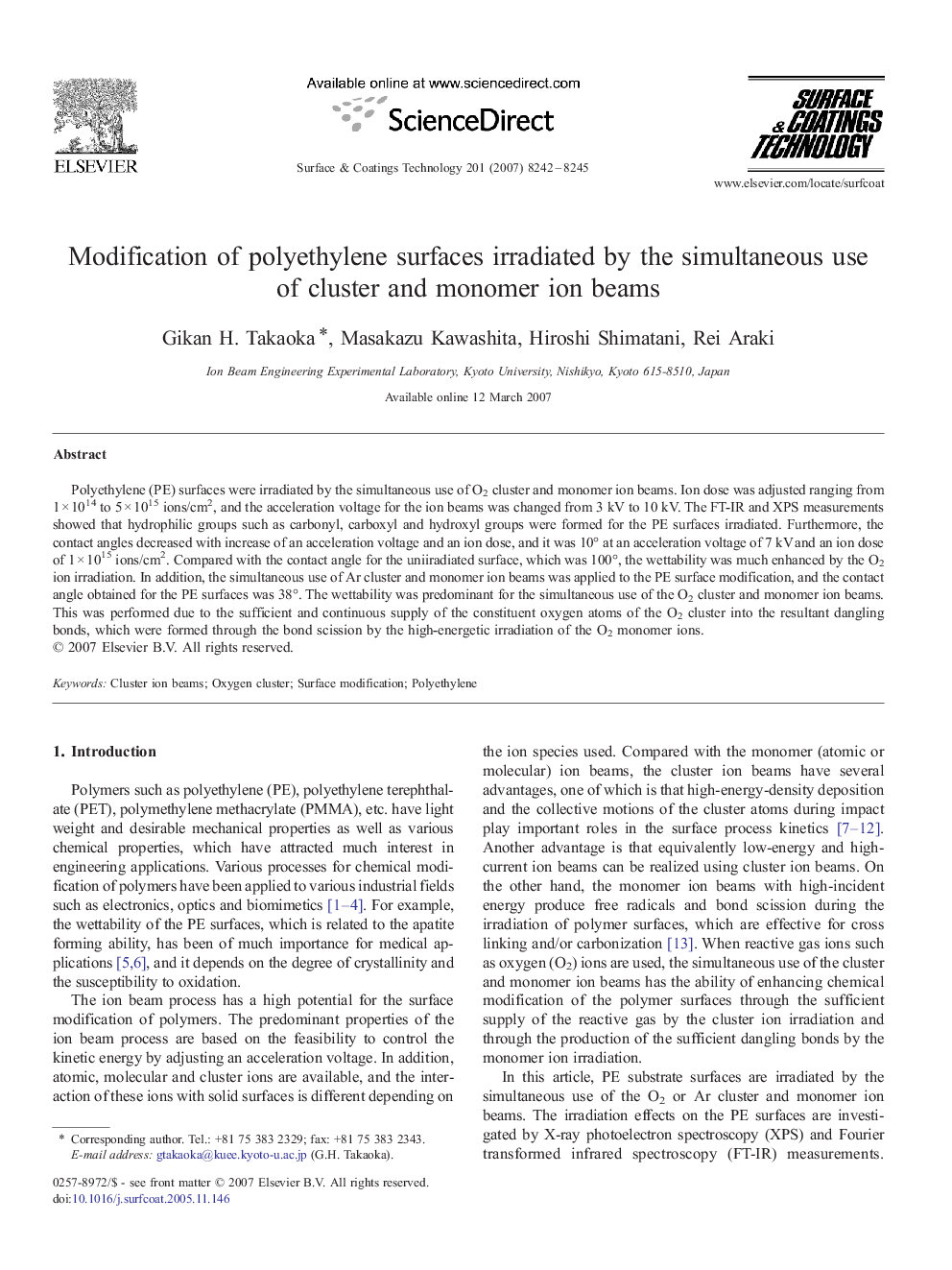| Article ID | Journal | Published Year | Pages | File Type |
|---|---|---|---|---|
| 1662996 | Surface and Coatings Technology | 2007 | 4 Pages |
Polyethylene (PE) surfaces were irradiated by the simultaneous use of O2 cluster and monomer ion beams. Ion dose was adjusted ranging from 1 × 1014 to 5 × 1015 ions/cm2, and the acceleration voltage for the ion beams was changed from 3 kV to 10 kV. The FT-IR and XPS measurements showed that hydrophilic groups such as carbonyl, carboxyl and hydroxyl groups were formed for the PE surfaces irradiated. Furthermore, the contact angles decreased with increase of an acceleration voltage and an ion dose, and it was 10° at an acceleration voltage of 7 kV and an ion dose of 1 × 1015 ions/cm2. Compared with the contact angle for the uniiradiated surface, which was 100°, the wettability was much enhanced by the O2 ion irradiation. In addition, the simultaneous use of Ar cluster and monomer ion beams was applied to the PE surface modification, and the contact angle obtained for the PE surfaces was 38°. The wettability was predominant for the simultaneous use of the O2 cluster and monomer ion beams. This was performed due to the sufficient and continuous supply of the constituent oxygen atoms of the O2 cluster into the resultant dangling bonds, which were formed through the bond scission by the high-energetic irradiation of the O2 monomer ions.
